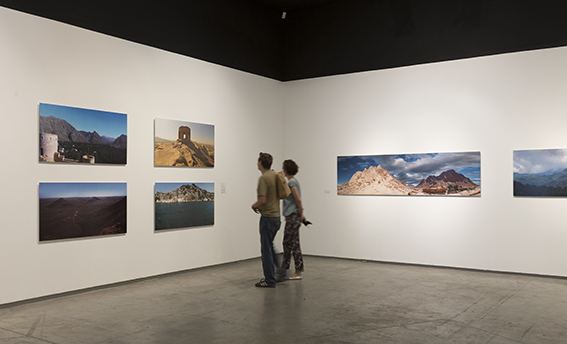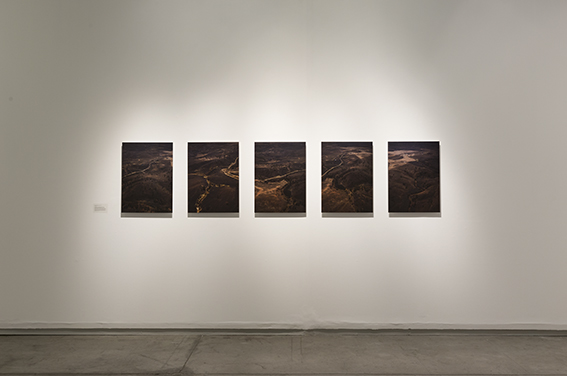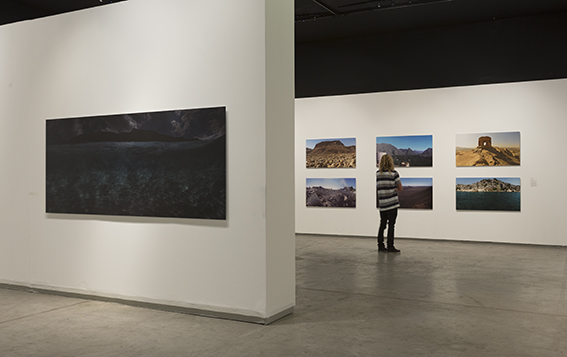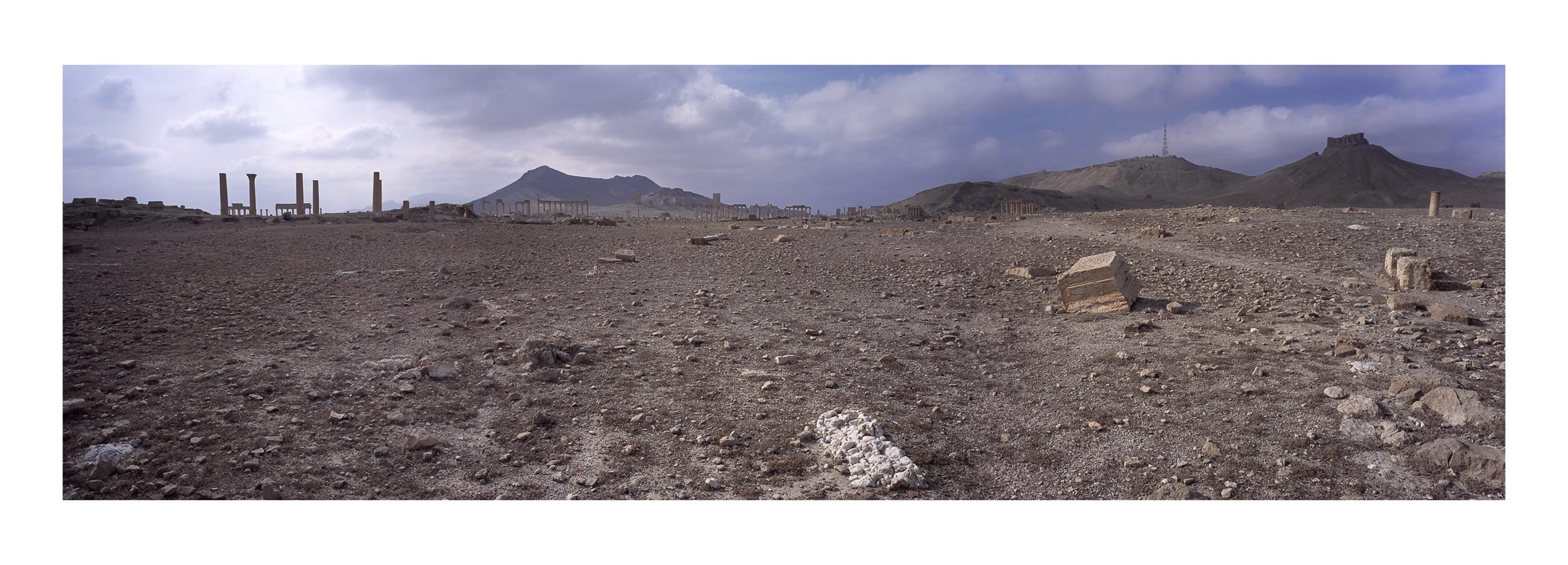Writing the landscape: Phillip George
Writing the Landscape explores the nature of place as biographical inscription. It shows stunning landscapes from Australia and the Middle East that are tribally, ethically, religiously and politically deeply carved.
Revealing their interlaced narratives, Phillip George interrogates the role of landscape in the construction of national identity and formation of global and local collective memories. Landscapes are examined and considered as a form of codified history, from the viewpoint of personal experience – a short historic time frame, and from the formal public institution perspective – a longer archaeological time frame. Here, both time frames are seen to operate simultaneously.
The exhibition places the Australian landscape tradition into an international and national context and, in the example of Gallipoli, locates an aspect of Australia’s identity in a foreign place. Writing the Landscape shows that all land has multiple layers of conflict, heritage and politics deeply embedded, connecting us all with a global experience of shared history.
A site captured in Trace #1 (2005) is historically layered. From the Nabataeans, Greeks, Romans, Crusaders and a contemporary Ba’athist military radio tower, this landscape has been a strategic point throughout history due to its geographical location and access to water. With the addition of inherited cultural and religious significance its borders are incessantly renegotiated and contested.
Tomb of John the Baptist 2006 was filmed inside the Umayyad Mosque in the old city of Damascus, this quiet moving image work humbly brings the daily human activities into the greater context and timeframe suggested within the exhibition. The Umayyad Mosque, also known as the Great Mosque of Damascus is one of the largest and oldest mosques in the world. It is considered by some Muslims to be the fourth-holiest place in Islam.
Mt Nebo (2006) refers to the mountain summit from which, according to ancient tradition, Moses saw the Promised Land before he died.
Then Moses climbed Mount Nebo from the plains of Moab to the top of Pisgah, across from Jericho. There the Lord showed him the whole land…. Then the Lord said to him, “This is the land I promised on oath to Abraham, Isaac and Jacob when I said, ‘I will give it to your descendents.’ I have let you see it with your eyes, but you will not cross over into it.” And Moses the servant of the Lord died there in Moab, as the Lord had said. He buried him in Moab, in the valley opposite Beth Peor, but to this day on one knows where his grave is. Deuteronomy 34:1-6
In Temple (2014) George captures views of the shrine located on the Temple Mount in the Old City of Jerusalem. Built between 687 and 691, the Dome of the Rock, Qubbat As-Sakhrah or Al-Haram al-Sharif, is considered to be the spot from which the Islamic prophet Muhammad ascended to Heaven. In the Jewish tradition, the stone is the site where Abraham prepared to sacrifice his son Isaac as well as being the site of Solomon’s temple which housed the Ark of the Covenant containing the Ten Commandments. Christians believe it is a place where Jesus walked. Significant to Jews, Christians and Muslims, the site is highly contested and could, according to some theorists ignite a Third World War.
Exhibition Details
ACP Gallery, 11 April – 7 June 2015
Artists Biography
Phillip George’s practice operates across zones of cultural difference; exploring and making correlations between the complexities that exist between East and West. His work draws of connections between Australian beach culture and the fractured, turbulent zones of the Middle East. In 2007 George received his Doctorate Creative Arts from the University of Western Sydney. He has exhibited nationally and internationally and his work is held in the collections of the National Gallery of Australia.
 Installation View, Courtesy and © Michael Waite ACP
Installation View, Courtesy and © Michael Waite ACP Installation View, Courtesy and © Michael Waite ACP
Installation View, Courtesy and © Michael Waite ACP Installation View, Courtesy and © Michael Waite ACP
Installation View, Courtesy and © Michael Waite ACP Installation View, Courtesy and © Michael Waite ACP
Installation View, Courtesy and © Michael Waite ACP






